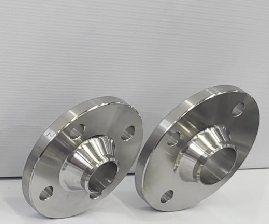What grade is carbon steel flanges?
What are the 3 grades of carbon steel?
The grade of carbon steel used for flanges is specified by various ASTM (American Society for Testing and Materials) standards. The most common grade for carbon steel flanges is ASTM A105.
What grade is carbon steel flanges?
The grade of carbon steel used for flanges is specified by various ASTM (American Society for Testing and Materials) standards. The most common grade for carbon steel flanges is ASTM A105.
This standard specification covers forged carbon steel piping components, including flanges, intended for use in pressure systems at ambient and higher-temperature service conditions. ASTM A105 is a widely used standard for carbon steel flanges and fittings.
It’s important to note that within the ASTM A105 specification, there are different grades, such as Grade 1 and Grade 2. These grades are differentiated based on the chemical composition and mechanical properties. The choice of grade depends on factors like the service conditions, temperature, and pressure requirements of the application.
In addition to ASTM A105, other ASTM standards may be applicable for specific types of carbon steel flanges

What are the 3 grades of carbon steel?
- Low Carbon Steel (Mild Steel):
- Carbon Content: 0.05% to 0.30%
- Characteristics: Soft, ductile, and easily machinable. It has good weldability and is often used in structural applications, such as construction and bridges.
- Medium Carbon Steel:
- Carbon Content: 0.30% to 0.60%
- Characteristics: Offers a balance between strength and ductility. It is used for applications such as gears, axles, and machine parts.
- High Carbon Steel:
- Carbon Content: 0.60% and higher
- Characteristics: Hard and strong, but less ductile. High carbon steel is often used in applications that require hardness, such as cutting tools, knives, and springs.
These grades represent a spectrum of carbon content, with low carbon steel having the least amount of carbon and high carbon steel having the highest. The choice of grade depends on the specific requirements of the application, considering factors like strength, hardness, ductility, and machinability. Additionally, alloying elements beyond carbon, such as manganese, silicon, and others, can influence the properties of the steel and are considered when determining the appropriate grade for a particular use.




